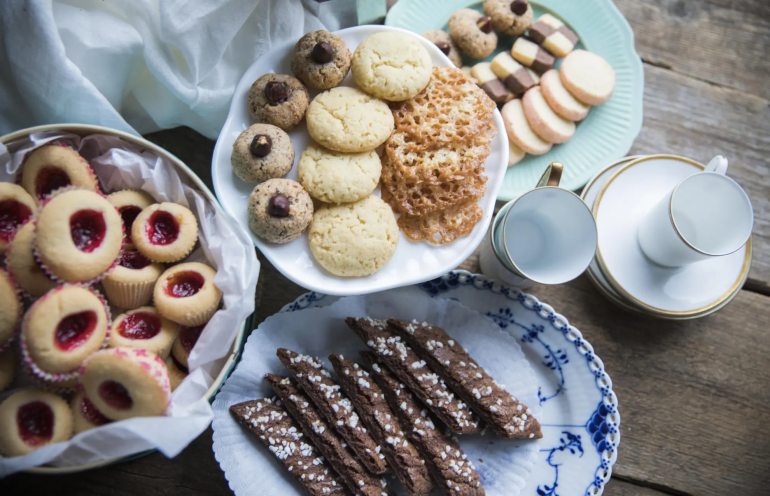Published on 17 March 2025
Why do we need seven types of biscuits with our cup of tea?
The Evaluation of Teaching & e-portfolio Community of Practice (ET CoP) has embraced the idea that assessing our own practices as educators is a multi-stage and multi-faceted process through which all academics will go at one point or another. We understand evaluation of teaching as everyone’s “cup of tea”, as we see it as an essential part of inclusive and reflective academic practice.
This idea is supported by the educational literature, which has repeatedly shown that reflecting on evidence of your teaching underpins robust scholarly teaching and is essential to being a critically self-reflective teacher (see, for example, Brookfield, 1995). It’s important to know that our teaching is effective, and why. However, the preparation of our cup of tea to meet our taste varies, as it depends on the unique characteristics of our courses and students, the nature and requirements of our disciplines, as well as our previous teaching and development experiences.
To make the process sweeter, we propose using a metaphor inspired by a Swedish and Norwegian tradition: seven kinds of biscuits (sju sorters kakor in Swedish). When welcoming guests, the host would bake seven different types of biscuits. Baking just six types could be seen as a sign of being unprepared, while going for eight would be seen as being pretentious, which could offend the guests. It is all about finding the right balance!
We invite you to expand the metaphor and choose from some of the many teaching evaluation “biscuits” available. Some of these are more formative (developmental) in nature, while others are summative (evaluative), and your choice of biscuits will depend on your purpose (Evaluating Learning and Teaching – UNSW; Preskill & Russ-Eft, 2016). Here are some examples:
- Peer Review of Teaching from colleagues, supervisors or even external industry contacts, as appropriate, depending on the aspects of your practice on which you are seeking feedback.
- Academic mentoring, at the level of either the University or your Faculty.
- myExperience survey as an opportunity to gather constructive feedback from students at the end of the term.
- myEducation portfolio to collate and reflect on multiple pieces of evidence, including unsolicited feedback from peers or students.
- In-class informal surveys and activities to implement new strategies based on previous feedback.
- Programmatic Assessment for Learning (PAL) to facilitate understanding of the teaching and learning process through multiple low-stakes opportunities.
- Available continuing professional development (CPD) opportunities, such as Beginning to Teach (BTT), Teaching Accelerator Program (TAP), Foundations of University Learning & Teaching Program (FULT), Course Design Institute (CDI), and self-paced modules.
- Connecting with colleagues, such as attending one of our High TEAch events at the end of each term.
- Self-reflection might be the forgotten biscuit!
- Get creative and explore your own ways; bake your own biscuits!
A combination of different ways of assessing your teaching practice will allow you to get a more flavoursome cup of tea at the end, acknowledging the insights that different stakeholders can bring to your practice. Gathering evidence from different sources also provides a robust evidence base for your teaching portfolio, which can be used later when applying for teaching awards (University-level and per Faculty), one type of biscuit will not fit all. You need to find the unique number and right combination of biscuits (that is, evaluation of teaching tools) that would better support your students’ learning and experiences, as well as the development of your teaching skills and academic progression.
We have collated and packaged some of these biscuits in our Postcards of Practice (from local experiences at UNSW), which you can find at the Teaching Commons or by requesting them directly from us. If you want to know more about evaluation of teaching, consider joining our ET CoP and attending our monthly meetings!
***
Reading this on a mobile? Scroll down to read more about the authors.
